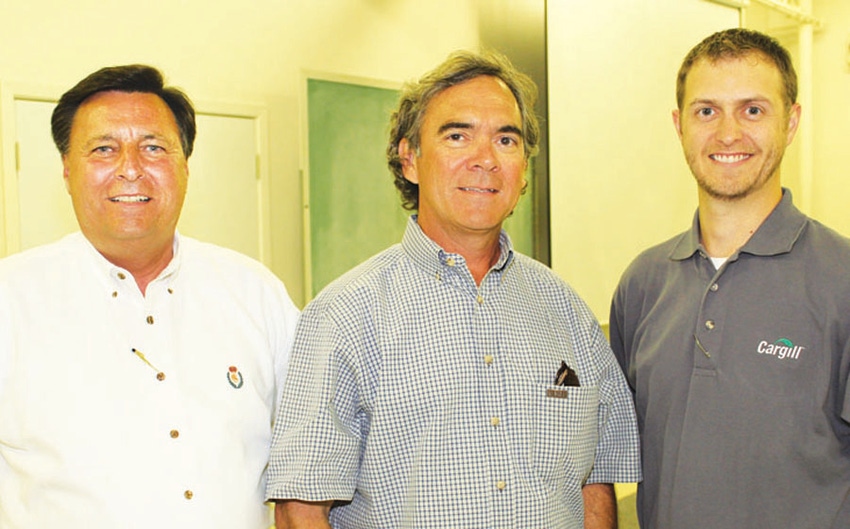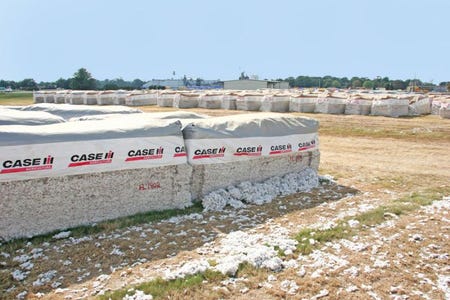
The fee for classing cotton at the USDA/Agricultural Marketing Service Cotton Classing Offices will remain unchanged at $2.20 for 2013, says Keith Maloney, area director for the office at Dumas, Ark., which classes the bulk of the crop in Mississippi and Arkansas.
There will continue to be a 5-cent discount for all gins and warehouses serving as collection agents.
“To get ready for this year’s crop, we’re currently doing pre-season preparation and testing of HVI equipment,” Maloney said at meetings of the Southern Cotton Ginners Association, where he and assistant area director David Rowland made presentations.
He says, too, that the Memphis classing office is moving toward automation of the HVI classing process.
“Our goal is to continue to become more efficient and effective in our classing office operations,” Maloney says. “Given the further declines in cotton acreage in Mississippi and Arkansas, the challenge continues to be retaining skilled, qualified personnel at our offices.”
The Dumas office classed a total of 1,044,961 bales for the 2012/13 season.
Arkansas bales totaled 282,062, down from 331,925 the previous year. Mississippi bales totaled 762,899, down from 989,236 the previous season.
For Arkansas bales, color grade 41 represented 83 percent of the bales classed, up from 61 percent the previous year; color 31 was 11. 8 percent, up from 36.4 percent the previous year; color light spotted was 3.4 percent, up from 0.5 percent the previous year; and color 51 was 1.4 percent, up from 0.9 percent the previous year.
Average micronaire for Arkansas bales was 4.92, compared to 4.74 the previous year; average length was 1.125, compared to 1.114 the previous year; average strength 30.92, unchanged from the previous year; average uniformity was 81.64, compared to 81.70 the previous year; average leaf was 4.11, compared to 3.78 the previous year; extraneous matter was 6.5, up from 1.2 the previous year; and average bark was 6.5, up significantly from 0.8 the previous year.
For Mississippi bales, color grade 41 was 64.2 percent of the bales classed, up from 42.6 percent the previous year; color 31 and up was 28.7 percent, a significant drop from 53.7 percent the previous year; color 52 was 2.3 percent, compared to 0.7 percent the previous year; color light spotted was 4.5 percent, compared to 2.7 percent the previous year.
Average micronaire for Mississippi bales was 4.84, compared to 4.72 the previous year; average length was 1.125, compared to 1.119 the previous year; average strength was 30.55, compared to 31.02 the previous year; average uniformity was 81.53, compared to 81.79 the previous year; average leaf was 3.88, compared to 3.57 the previous year; extraneous matter was 6.6, compared to 2.4 the previous year; and bark, at 6.6, was up significantly from the previous year’s 1.2.

COTTON from Mississippi and Arkansas in 2012 was significantly higher in bark and extraneous matter.
Extraneous matter is any substance found in cotton other than fiber and leaf, and in a cotton sample is any substance that is not discernible with the official standards. All upland and Pima cotton containing “an appreciable quantity” of such material is identified in classing remarks as Level 1 or Level 2, along with the appropriate code designation.
“Extraneous matter in cotton is an important issue,” Maloney says. “If an AMS grader fails to add extraneous matter when it is present, the quality of the grading service is compromised, the merchant doesn’t receive the quality expected and priced, and cotton mills may experience spinning and weaving issues, depending on the type of extraneous matter.
“Also, cotton delivered on InterContinental Exchange (ICE) contract is not tenderable if extraneous matter is added, and exported cotton could be rejected.
Ag news delivered daily to your inbox: Subscribe to Delta Farm Press Daily.
“As part of the AMS’ Quality Assurance program, we have increased the number of potential extraneous matter bales selected for checking,” he says. “Extraneous matter bales are reviewed daily by supervisors in classing offices, and a weekly summary is generated.”
Upon request, extraneous matter bales changed in Quality Assurance are returned to the classing offices for review. Two supervisors review any changes made to extraneous matter in Quality Assurance. Extraneous matter special lots are submitted to Quality Assurance for review and returned to the classing office.
About the Author(s)
You May Also Like




